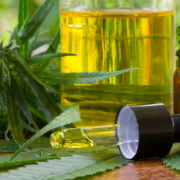Cannabis in palliative medicine: improving care and reducing opioid-related morbidity.
Authors:
Gregory T. Carter, Aaron M. Flanagan, Mitchell Earleywine, Donald I. Abrams, Sunil K. Aggarwal, Lester Grinspoon
Published in American Journal of Hospice and Palliative Medicine
August 2011
Abstract
Unlike hospice, long-term drug safety is an important issue in palliative medicine. Opioids may produce significant morbidity. Cannabis is a safer alternative with broad applicability for palliative care. Yet the Drug Enforcement Agency (DEA) classifies cannabis as Schedule I (dangerous, without medical uses). Dronabinol, a Schedule III prescription drug, is 100% tetrahydrocannabinol (THC), the most psychoactive ingredient in cannabis. Cannabis contains 20% THC or less but has other therapeutic cannabinoids, all working together to produce therapeutic effects. As palliative medicine grows, so does the need to reclassify cannabis. This article provides an evidence-based overview and comparison of cannabis and opioids. Using this foundation, an argument is made for reclassifying cannabis in the context of improving palliative care and reducing opioid-related morbidity.
PAYWALL
Citation:
Carter GT, Flanagan AM, Earleywine M, Abrams DI, Aggarwal SK, Grinspoon L. Cannabis in Palliative Medicine: Improving Care and Reducing Opioid-Related Morbidity. Am J Hosp Palliat Med. 2011;28(5):297-303. doi:10.1177/1049909111402318

